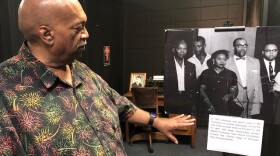After the stock market crash of 1929, Americans across the country were in danger of losing their houses to foreclosure.
The federal government stepped in, providing bonds for homeowners to refinance their mortgages as part of the New Deal. But in larger cities, the government drew boundaries between neighborhoods that were eligible and ineligible for new loans.
The so-called "risky" areas were usually low-income, African-American communities. This is widely considered the source of redlining, or denying benefits based on racial divides. Today, a project that started at UNC-Chapel Hill is drawing those original boundaries over todayÔÇÖs maps of inner cities to show their lasting effects.
Host Frank Stasio talks with Richard Marciano, founder of the project called "" and professor of Information Studies at the University of Maryland, and , a history professor at Johns Hopkins University.
View Marciano's interactive maps of . The national map is available .
report of a red area that includes the Hayti community - a historically black neighborhood in Durham - has a description that indicates the presence of African-Americans made the area too risky for loans.
"This was formerly a good white residential street, but negroes are gradually taking up the area," it says.









